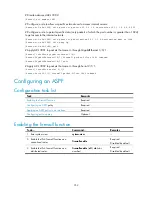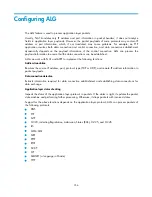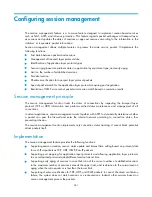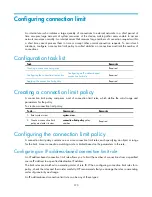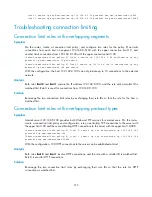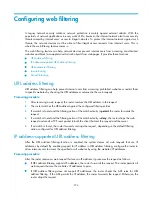
362
•
Supporting ICMP error packet mapping and allowing the system to search for original sessions
according to the payload of these packets. Because error packets are generated due to host errors,
the mapping can help speed up the aging of the original sessions.
•
Supporting persistent sessions, which are not aged within a long period of time.
•
Supporting session management of control channels and dynamic data channels of application
layer protocols, for example, FTP.
•
Supporting limiting the number of session-based connections. For more information, see
"
."
Configuration task list
Complete the following tasks to configure session management:
•
Setting protocol state-based session aging times
•
Configuring application layer protocol type-based session aging time
•
Configuring session early aging
•
Setting the maximum number of sessions allowed to be established
•
Enabling checksum verification
•
Specifying the persistent session rule
•
These tasks are mutually independent and can be configured in any order. configure them as required.
Setting protocol state-based session aging times
This aging time setting is effective only for the sessions that are being established.
If the application layer protocol of a session supports session aging time configuration, the session takes
the session aging time set based on the application layer protocol type as its aging time when it is in the
READY/ESTABLISH state. For more information, see "
Configuring application layer protocol type-based
."
If a session entry is not matched with any packets in a specified period of time, the entry is aged out.
CAUTION:
For a large amount of sessions (more than 800,000), do not specify too short of an aging time.
Otherwise, the console might be slow in response.





